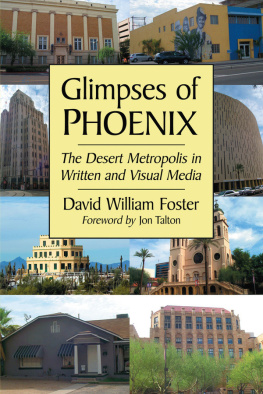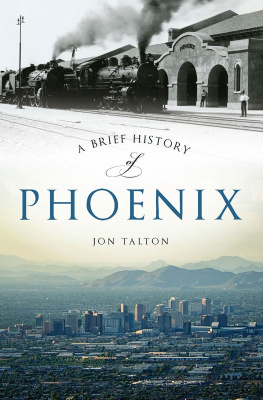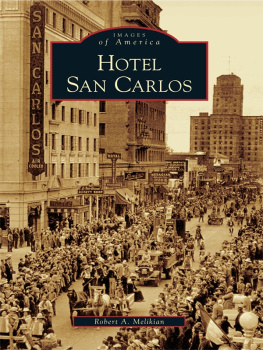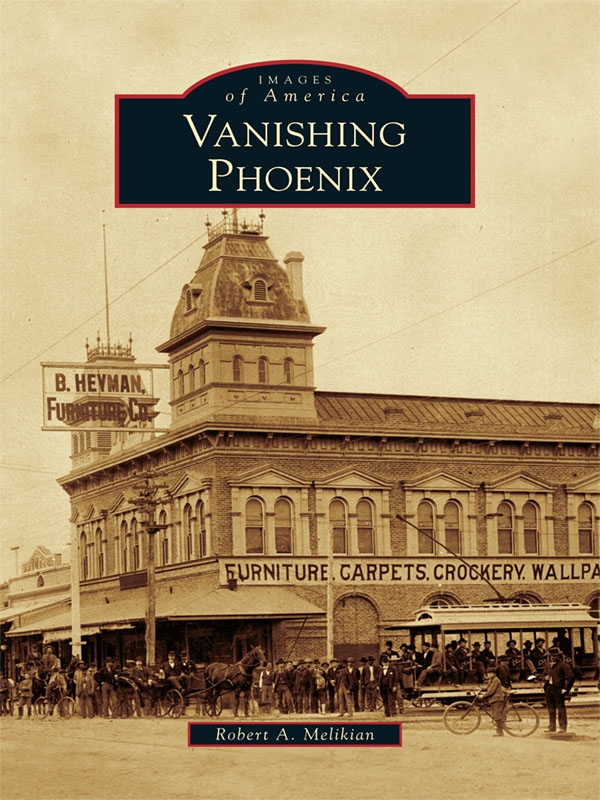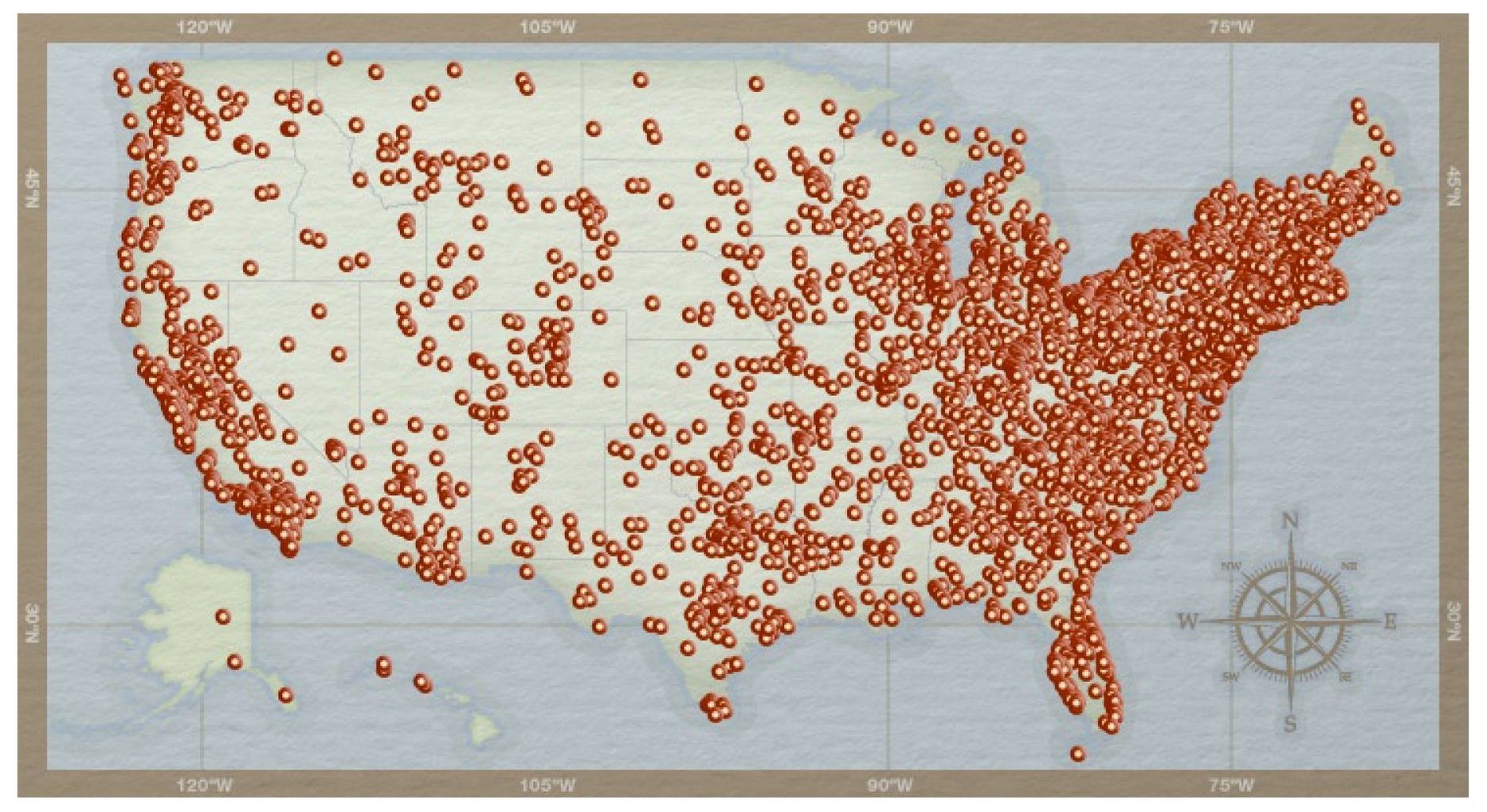A nation which does not know what it was yesterday, does not know what it is today, nor what it is trying to do.
The beauty that was Phoenix. These are some of the names of buildings lost in history. Ive tried to identify all the buildings that I could find photographs of, and to investigate the year built and the year lost of each building. You will see the craftsmanship, the art, the charm, the magnificent attention to detailthats what Phoenix produced in the past. All with a sense of pride and humanity, and all built on a human scale. They welcomed people and produced great memories. They encouraged people to interact and encouraged pedestrian activity. Phoenix had buildings that were good for business and good for neighborhoods. Nature and other people were much more a part of peoples lives. These buildings live now only in our memories.
All of the buildings in this book have vanished. Almost all of them were deliberately razed. In most cases, someone decided that the highest and best use of the land they sat on was for something else. And now we have to live with those decisions. Perhaps the concept of highest and best use should have included the social or community benefit of the structure along with the immediate economic profit to the temporary owner.
I want to deeply thank the usual suspects: Jared Jackson and Hannah Carney of Arcadia Publishing, who walked me through the book and did the technical wizardry. Pam Rector, archivist at the Phoenix Museum of History, Robert Spindler and Karrie at Arizona State University Archives/ McLaughlin Collection, and Marie Hernandez at the Phoenix Public Library, who all gave me images and were great to work with. John Jacquemart, the historic researcher extraordinaire, knows his historic facts better than anyone and was my consultant and coffee drinking buddy.
WHY SAVE HISTORIC BUILDINGS?
Preservation helps people, places, our environment, and our economy because old buildings: add to the variety and beauty of our lives, which become more mechanized and stereotyped on a daily basis; are physical links to the past; reflect old values; can be a green alternative to new construction and foster development that is socially, economically, and environmentally sustainable; give many people a feeling of calmness, a sense of security, and a feeling of being linked by sharing similar experiences with their community; foster a sense of unique national and personal identity; have intrinsic value as art; encourage pedestrian activity and face-to-face interaction.It is the blending of the new and the old that makes for a lively, appealing urban environment. Not every old building should be saved, but without historic preservation, Phoenix would become a creeping, spreading mass of architectural mediocrity.
What can be done? The best tool for saving historic buildings is transferable development rights. The city can solve the problem of land scarcity downtown by creating more of it. When a property on valuable land is deemed worthy of historical preservation, the landowner can be granted transferable development rights equal to the potential value of the property on which the historic building sits. Those rights could then be transferred to another parcel of land, even if such a transfer takes the building over the citys height limit. In that case, the historic building is saved, the property owners rights are not infringed upon, the city gets its additional space and tax revenue, and the overall goal of adding density is met. This process would also allow heights in the city to be increased in a slow and orderly fashion, which is appropriate given growth pressures.
The next step is strengthening the historic preservation ordinance and focusing it on commercial buildings. The citys historic preservation office should have the ability to deny a demolition permit. It should be used carefully, but some buildings are irreplaceable. This is a very important step but a difficult one right now in light of Prop. 207, an unduly restrictive antigovernment law. A property listed on the National Register of Historic Places and the Phoenix Historic Property Register does not stop the property owner from demolishing the historic propertythe most that can be done is to halt demolition for 365 days. This must be corrected right away.
Adapt a smart building code, which is happening right now, to make rehabilitation attractive. If an owner wants to keep a historic building standing, he should be given a great deal of leeway. It could be a bad business decision to alter a historic building away from its roots, but that should be up to the sympathetic owner if he feels he needs to do that in order to keep the building economically viable. If an owner wants to raze a historic building, he should be fought tooth and nail, but the best way to save the building is to let the owner turn it into a profit-maker for himself and by himself. This is also the least expensive way for the city.
The city must start early. Once the owner has optimistic plans for huge profits, if demolition occurs, it is much more difficult to convince him, and it becomes politically unpopular. The city tries to do this, but it is hard to know what an owners plans are. Therefore, historic buildings should be identified and something like a congratulatory letter recorded so everyone has notice of the historic status. Besides transferring development rights and building code help, other ideas include loans, grants, tax credits, tax relief, and finding a tenant for the building.
Perhaps preservation cannot and should not be left entirely to the city. Most of the cities with strong preservation ordinances have them because there is an equally strong nonprofit presence. City staff cannot be advocates; it needs to come from the outside to be most effective. Phoenix should be designed to serve and enrich the people who live there, not to fulfill a market-driven or textbook vision packaged and promoted by real estate interests.
Find more books like this at
www.imagesofamerica.com
Search for your hometown history, your old
stomping grounds, and even your favorite sports team.
One
LOST BUILDINGS
We shape our buildings; thereafter, our buildings shape us.
Winston Churchill
| HISTORIC PHOENIX COMMERCIAL PROPERTIES SURVEY (1984) |
|---|
| Name | Address | Constr. Date |
|---|
| Piggly Wiggly Grocery Store | 1402-1406 E. Washington | 1929 |
| High Class Food Company | 1410 E. Washington | ca. 1934 |
| Walter Dubree Building Supplies | 1146 E. Van Buren | 1925 |
| Phoenix Costume House | 1229 E. Washington | 1919 |
| Bienvenidos House/ Drug Store | 1202 E. Jefferson | 1929 |
| AZ Citrus Growers Warehouse | 616 E. Jackson | 1937 |
| Lamb Hotel / Coronado Hotel | 807 N. 1 st St. | 1932 |
| Holohan Grocery | 326 N. 4th St. |





